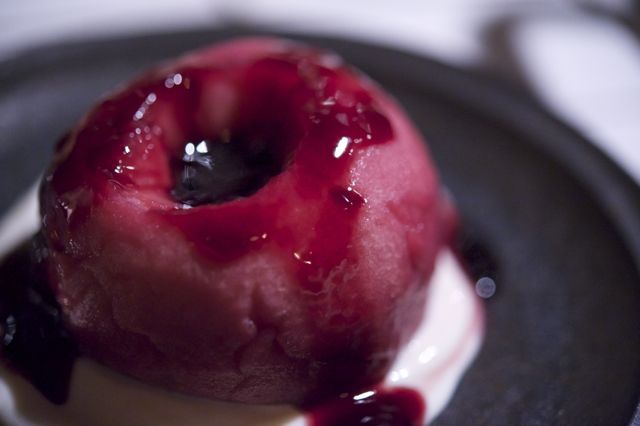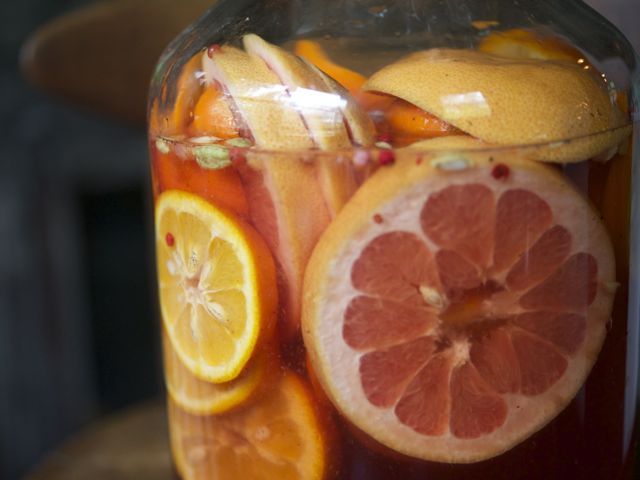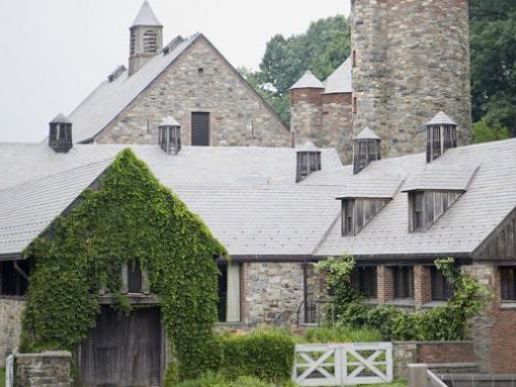The season of eating is here. Not that we don't eat all year long, duh, but you know what I mean. The holiday lunches, the cocktail hours, the office parties, the extended family feasts—all lined up in a sticky, fatty, calorie-laden row stretching out until New Year's Eve, when it comes to a close with one final champagne-fueled blow-out. And then? Remorse and penance. Juice fasts. Salad. Guilt-induced exercise binges. More salad. And still, visions of sugarplums dance in your head. We know that moderation is an option. We've all read those "how to handle the holidays without packing on the pounds" articles. Stick with wine spritzers and vodka on the rocks. Choose the celery sticks over the chips. We know the drill. These are truly first world problems. So let me present you with one first world solution. A dessert so beautiful and festive it's worthy of your fanciest dinner table, yet so low in fat and calories you can enjoy it without a second thought. Because between stressing over whether the roast is overdone and wondering if your sister is going to kill her husband right then and there, you've got enough on your mind without having to worry about a case of gout, right?
Read More...
Twitter @glutton4life
6.1.11 Home Brew: Vin d'Orange
I love a little tipple before dinner, especially in the summer. It just feels a little indulgent, leisurely. The apéritif was actually a 19th century invention for the purpose of delivering extremely bitter, malaria-fighting quinine. Herbs and spices were added to mask the disagreeable flavor and voilà! A French invention, of course. Although most agree that 18th-century Italians were well versed in the aperitivo. Campari is a perfect example of such a slightly bitter and agreeably complex concoction. I use the word tipple because the apéritif is a light drink, a small amount of alcohol just to awaken the appetite. (For you tee-totallers out there, I am going to do a post on the non-alcoholic versions very soon.) I personally love Lillet, technically called a tonic wine because of the addition of a liqueur of Chinchona bark from Peru which contains quinine.You can create your own version, by steeping citrus fruit in rosé with a few spices. Julia Moskin, in her fantastic online DIY cooking handbook for the New York Times, provides a great recipe, adapted from London chef Sally Clarke. The original version is made with Seville oranges, which I happened to have on hand from making marmalade. Julia adapts it with more readily available citrus. It has a powerful flavor that develops during a 6-week fermentation period. So, if you want to serve yours on July 4th, as I do, you'd better get cracking.
Read More...
Read More...
1.24.11 Everybody Must Get Stoned
It was my birthday on Saturday and I had the great fortune of celebrating with friends at Blue Hill, the restaurant at Stone Barns in Pocantico Hills. You may remember I wrote about another delectable meal I enjoyed there back in May. In a perfect world, I would eat there four times a year. The menu is linked to the seasons and what is grown on the farm—beef, pork and lamb included—and sourced locally. Stone Barns is a beautiful and fascinating place, an educational center as well as a non-profit working farm and a fine dining restaurant; please visit their websites (here and here) to learn more about the many things that go on there.
Read More...











